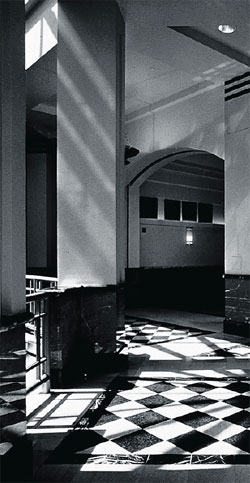2003 Facilities Standards (P100)
-->
4 - Structural Engineering

Martin Luther King Courthouse,
Newark, NJ
Three characteristics distinguish GSA buildings from buildings built for the private sector: longer life span, changing occupancies, and the use of a life cycle cost approach to determine overall project cost.
GSA generally owns and operates its buildings much longer than private sector owners. Accordingly, a higher level of durability and serviceability is required for all systems. In terms of structural design, this has resulted in more stringent requirements than those stipulated in model building codes; the floor load capacity requirement of this chapter is an example.
During the life span of a typical Federal building, many minor and major alterations are necessary as the missions of government agencies and departments change. The capability to accommodate alterations must be incorporated into the building from the outset. In some cases structural systems should be designed to provide some leeway for increase in load concentrations in the future. They should also be designed to facilitate future alterations, e.g., the cutting of openings for new vertical elements, such as piping, conduit and ductwork.
Security is an important consideration in structural design. Refer to Chapter 8: Security Design for design criteria related to this matter.
Submission Requirements
Every project will have unique characteristics and requirements for submission and review. The general submission requirements for each phase of project development are described in Appendix A: Submission Requirements.
Last Reviewed 2/18/2009